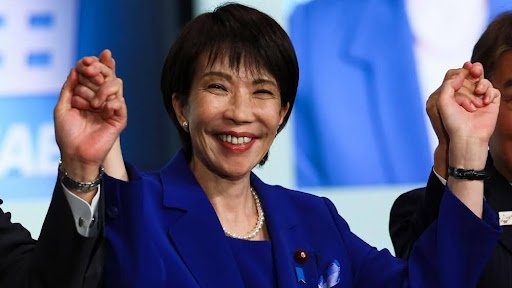Takaishi Set to Become Japan’s First Female Prime Minister
Takaichi set to become Japan’s next prime minister. Source: BBC
On October 4, Japan’s ruling party, the Liberal Democratic Party, elected Sanae Takaichi as its president, putting her on the path to becoming Japan’s next prime minister. During a parliamentary session later this month, leaders are set to confirm Takaichi as Japan’s first female prime minister. Despite being considered a highly developed and modernized country, Japan still has much progress to make in terms of gender equality. In 2024, only 16% of seats in the lower house were held by female representatives, significantly below the global average of 27%.
Takaichi, who leans heavily right-wing even within her conservative party, has become known for several controversial proposals, including anti-immigration policies, amendments to the country's pacifist constitution (which currently forbids Japan having an airforce, army, or navy), and a return to “Abenomics,” coined by former Prime Minister Shinzo Abe. She’s also been criticized for opposing gay marriage and proposing that married women be banned from keeping their maiden names, although she has since softened her stance on certain issues, now vowing to make babysitter fees partially tax deductible. Her staunch right-wing views likely appeal to those frustrated with Japan’s recent challenges, especially amid a global conservative wave.
This election marks an important new chapter in Japanese politics, but some fear that her leadership may not do much to advance women’s rights in the country. Takaichi herself has not made gender equality a key part of her campaign, although her leadership is likely to inspire other aspiring female politicians. A long-time admirer of Margaret Thatcher, Takaichi has positioned herself as Japan’s “Iron Lady,” following in the footsteps of Britain’s first female prime minister Margaret Thatcher.
A central part of Takaichi’s campaign is her economic policy. As a firm supporter of “Abenomics,” she advocates for loose monetary policy and higher fiscal spending. Japan’s economy has recently suffered from high inflation and sluggish growth. After Takaichi’s win, the Japanese yen weakened to more than 150 per U.S. dollar; President Trump previously accused Japan of deliberately weakening its currency to gain an advantage over the U.S. However, the weaker yen has also worsened import costs and the domestic cost-of-living crisis, creating a difficult economic backdrop for Takaichi to begin her term.
Takaichi’s victory may also signal a shift in Japan’s foreign relations. She has called for strengthening the U.S.–Japan alliance and encouraging more collaboration between the two nations, in addition to proposed partnerships with Taiwan while being critical of China. Additionally, Takaichi supports revising Article 9 of the Japanese constitution, which originally “renounces the use of military force.” In a country with a long military history, these changes could signal a more hawkish approach to foreign policy, one that strengthens alliances but risks heightened tensions with neighboring countries.
Ultimately, Takaichi is stepping into her role during an uncertain time in Japanese politics. Amid national economic struggles and ongoing global conflicts, Japan finds itself at a pivotal moment in history; Takaichi hopes to bring a fresh perspective, using her platform and conservative influence to drive change. Although her confirmation by parliament is still pending, she has already become a powerful figure in Japanese politics and is sure to make waves in her new role.

